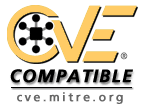Improper Sanitization of Special Elements |
| Weakness ID: 138 (Weakness Class) | Status: Draft |
Description Summary
Extended Description
Most languages and protocols have their own special elements such as characters and reserved words. These special elements can carry control implications. If software fails to prevent external control or influence over the inclusion of such special elements, the control flow of the program may be altered from what was intended. For example, both Unix and Windows interpret the symbol < ("less than") as meaning "read input from a file".
| Reference | Description |
|---|---|
| CVE-2001-0677 | Read arbitrary files from mail client by providing a special MIME header that is internally used to store pathnames for attachments. |
| CVE-2000-0703 | Setuid program does not cleanse special escape sequence before sending data to a mail program, causing the mail program to process those sequences. |
| CVE-2003-0020 | Multi-channel issue. Terminal escape sequences not filtered from log files. |
| CVE-2003-0083 | Multi-channel issue. Terminal escape sequences not filtered from log files. |
Phase: Implementation Developers should anticipate that special elements (e.g. delimiters, symbols) will be injected into input vectors of their software system. One defense is to create a white list (e.g. a regular expression) that defines valid input according to the requirements specifications. Strictly filter any input that does not match against the white list. Properly encode your output, and quote any elements that have special meaning to the component with which you are communicating. |
Phases: Architecture and Design; Implementation Assume all input is malicious. Use a standard input validation mechanism to validate all input for length, type, syntax, and business rules before accepting the data to be displayed or stored. Use an "accept known good" validation strategy. |
Phase: Implementation Use and specify an appropriate output encoding to ensure that the special elements are well-defined. A normal byte sequence in one encoding could be a special element in another. |
Phase: Implementation Do not rely exclusively on blacklist validation to detect malicious input or to encode output. There are too many variants to encode a character; you're likely to miss some variants. |
Phase: Implementation Inputs should be decoded and canonicalized to the application's current internal representation before being validated. Make sure that your application does not decode the same input twice. Such errors could be used to bypass whitelist schemes by introducing dangerous inputs after they have been checked. |
| Ordinality | Description |
|---|---|
Primary | (where the weakness exists independent of other weaknesses) |
| Nature | Type | ID | Name | View(s) this relationship pertains to |
|---|---|---|---|---|
| ChildOf |  Weakness Class Weakness Class | 74 | Failure to Sanitize Data into a Different Plane ('Injection') | Development Concepts (primary)699 |
| ChildOf |  Category Category | 137 | Representation Errors | Development Concepts699 |
| ChildOf |  Weakness Class Weakness Class | 707 | Improper Enforcement of Message or Data Structure | Research Concepts (primary)1000 |
| ParentOf |  Weakness Base Weakness Base | 140 | Failure to Sanitize Delimiters | Development Concepts (primary)699 Research Concepts (primary)1000 |
| ParentOf |  Weakness Variant Weakness Variant | 147 | Improper Sanitization of Input Terminators | Development Concepts (primary)699 Research Concepts (primary)1000 |
| ParentOf |  Weakness Variant Weakness Variant | 148 | Failure to Sanitize Input Leaders | Development Concepts (primary)699 Research Concepts (primary)1000 |
| ParentOf |  Weakness Variant Weakness Variant | 149 | Failure to Sanitize Quoting Syntax | Development Concepts (primary)699 Research Concepts (primary)1000 |
| ParentOf |  Weakness Variant Weakness Variant | 150 | Failure to Sanitize Escape, Meta, or Control Sequences | Development Concepts (primary)699 Research Concepts (primary)1000 |
| ParentOf |  Weakness Variant Weakness Variant | 151 | Improper Sanitization of Comment Delimiters | Development Concepts (primary)699 Research Concepts (primary)1000 |
| ParentOf |  Weakness Variant Weakness Variant | 152 | Improper Sanitization of Macro Symbols | Development Concepts (primary)699 Research Concepts (primary)1000 |
| ParentOf |  Weakness Variant Weakness Variant | 153 | Improper Sanitization of Substitution Characters | Development Concepts (primary)699 Research Concepts (primary)1000 |
| ParentOf |  Weakness Variant Weakness Variant | 154 | Improper Sanitization of Variable Name Delimiters | Development Concepts (primary)699 Research Concepts (primary)1000 |
| ParentOf |  Weakness Variant Weakness Variant | 155 | Improper Sanitization of Wildcards or Matching Symbols | Development Concepts (primary)699 Research Concepts (primary)1000 |
| ParentOf |  Weakness Variant Weakness Variant | 156 | Improper Sanitization of Whitespace | Development Concepts (primary)699 Research Concepts (primary)1000 |
| ParentOf |  Weakness Variant Weakness Variant | 157 | Failure to Sanitize Paired Delimiters | Development Concepts (primary)699 Research Concepts (primary)1000 |
| ParentOf |  Weakness Variant Weakness Variant | 158 | Failure to Sanitize Null Byte or NUL Character | Development Concepts (primary)699 Research Concepts (primary)1000 |
| ParentOf |  Weakness Class Weakness Class | 159 | Failure to Sanitize Special Element | Development Concepts (primary)699 Research Concepts (primary)1000 |
| ParentOf |  Category Category | 169 | Technology-Specific Special Elements | Development Concepts (primary)699 |
| ParentOf |  Weakness Base Weakness Base | 464 | Addition of Data Structure Sentinel | Research Concepts (primary)1000 |
| ParentOf |  Weakness Class Weakness Class | 790 | Improper Filtering of Special Elements | Research Concepts (primary)1000 |
| This weakness can be related to interpretation conflicts or interaction errors in intermediaries (such as proxies or application firewalls) when the intermediary's model of an endpoint does not account for protocol-specific special elements. |
| See this entry's children for different types of special elements that have been observed at one point or another. However, it can be difficult to find suitable CVE examples. In an attempt to be complete, CWE includes some types that do not have any associated observed example. |
| This weakness is probably under-studied for proprietary or custom formats. It is likely that these issues are fairly common in applications that use their own custom format for configuration files, logs, meta-data, messaging, etc. They would only be found by accident or with a focused effort based on an understanding of the format. |
| Mapped Taxonomy Name | Node ID | Fit | Mapped Node Name |
|---|---|---|---|
| PLOVER | Special Elements (Characters or Reserved Words) | ||
| PLOVER | Custom Special Character Injection |
| CAPEC-ID | Attack Pattern Name | (CAPEC Version: 1.4) |
|---|---|---|
| 15 | Command Delimiters |
| Submissions | ||||
|---|---|---|---|---|
| Submission Date | Submitter | Organization | Source | |
| PLOVER | Externally Mined | |||
| Modifications | ||||
| Modification Date | Modifier | Organization | Source | |
| 2008-07-01 | Eric Dalci | Cigital | External | |
| updated Description, Potential Mitigations, Time of Introduction | ||||
| 2008-09-08 | CWE Content Team | MITRE | Internal | |
| updated Description, Relationships, Other Notes, Taxonomy Mappings | ||||
| 2009-03-10 | CWE Content Team | MITRE | Internal | |
| updated Description, Name | ||||
| 2009-07-27 | CWE Content Team | MITRE | Internal | |
| updated Applicable Platforms, Description, Observed Examples, Other Notes, Potential Mitigations, Relationship Notes, Relationships, Research Gaps, Taxonomy Mappings, Weakness Ordinalities | ||||
| 2009-12-28 | CWE Content Team | MITRE | Internal | |
| updated Relationships | ||||
| Previous Entry Names | ||||
| Change Date | Previous Entry Name | |||
| 2008-04-11 | Special Elements (Characters or Reserved Words) | |||
| 2009-03-10 | Failure to Sanitize Special Elements | |||





